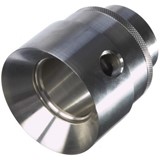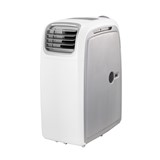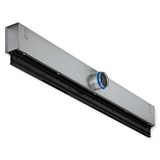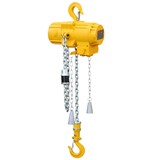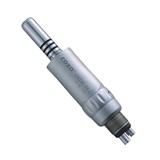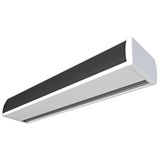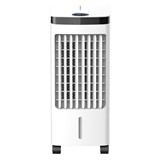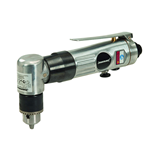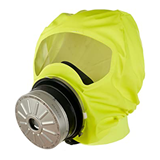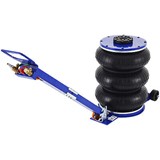Many of Australia's commercial and industrial buildings have fibreglass and plastic skylights. While steel deck roofs are generally strong enough to carry the weight of pedestrians, the same can't be said of skylights and asbestos.
Skylights, fibreglass and plastic sheeting
Better known as Laserlite or Alsynite, fibreglass and plastic roof sheeting often needs to be crossed by maintenance workers o access gutters or air conditioning equipment. Unfortunately, the fibreglass and plastic sheeting commonly found in commercial buildings is not trafficable and becomes brittle. Unless guaranteed by the manufacturer (which is unlikely), all fibreglass and plastic roofing should be regarded as fragile and not capable of bearing loads – making it off limits for pedestrians.
Asbestos
Asbestos roofs are still common. For years, wire mesh or “safety mesh” has been used as a fall arrest device for roofers and while a lot of asbestos roofs have the mesh underneath, many don’t. Workplace safety authorities regard asbestos roofs as a brittle and fragile surface that simply should not be walked on, irrespective of the presence of safety mesh.
Staying on top of height safety compliance
Fall prevention regulations and codes of practice stipulate the controls for height safety risks and which of them should be used first whenever practicable. This article outlines the five-level Victorian hierarchy, which prescribes:
Level 1: Undertake the work on the ground or on a solid construction
Level 2: Undertake the work using a passive fall protection device
Level 3: Undertake the work using a work positioning system
Level 4: Undertake the work using a fall injury prevention system
Level 5: Undertake the work from ladders, or implement administrative controls
Level 1
Level 1 eliminates the hazard altogether. To achieve this, building owners could relocate plant and equipment away from fall hazards.
Level 2
If Level 1 is not practicable, Level 2 calls for a passive fall prevention device, such as a catwalk or walkway, to eliminate the hazard presented by the non-load bearing material and guardrails on the side to prevent anyone stepping off the walkway. Alternatively, an elevated platform can be used to clean the gutters if this can be done without introducing other hazards, such as overhead cables. Skylight covers are another solution.
Level 3
If Level 2 isn’t practicable, turn to Level 3. Work positioning systems, such as roof anchors or static lines, require a high level of user skill. They also demand ongoing involvement by the controller of the workplace in the form of training, regulating access, risk assessments and consultation. Level 3 controls won't prevent a fall through fragile surfaces, making them effectively Level 4 controls.
Level 4
Level 4 controls include fall arrest systems like tested and certified safety mesh or safety nets, roof anchor systems and static lines. The use of Level 4 controls acknowledges that injury is almost unavoidable in the event of a fall but aims to save lives. The workload associated with Level 4 controls is high. Apart from the ongoing responsibilities of training and so on of Level 3, the controller of the workplace is responsible for emergency rescue procedures, including the cost of a second suitably trained person on site at all times and the necessary equipment. New issues arise too, for example, whether the size of the access hatch or door is adequate for a person in a stretcher.
Level 5
If Level 4 isn’t practicable, then, as a last resort, Level 5 controls such as signage or training are used.
Why not simply use a roof anchor?
First of all, asbestos fibres should not be disturbed either by people walking across the roof or by the installation of an anchor. Second, skylights and asbestos are considered brittle surfaces unless there is certification that proves they are trafficable.
Safety mesh underneath doesn't make a brittle roof safe. Mesh installed as part of the roofing process is purely to protect the roofers from a fall hazard under the NSW Code of Practice for Safe Work on Roofs – Part 1 and the Victorian Code of Practice for Prevention of Falls in General Construction. To be used as a fall arrest system in NSW, a test certificate issued by a NATA registered or equivalent testing authority or evidence from the manufacturer that it complies with the Australian Standards is required. Similar requirements apply in Victoria. In practical terms, this documentation is rarely available in existing buildings, and an engineer is unlikely to certify the structure retrospectively and cost effectively. The integrity of the mesh is affected when penetrations are made (for air conditioners for example). It is almost impossible to establish the tensile strength of the wire without costly testing.
Even so, wire mesh is at best a Level 4 control. Since Level 2 controls such as walkways, guardrails and skylight covers are practicable to install, Level 4 controls are effectively precluded.
Plus, when Level 2 controls are used in Victoria, the controller of the workplace is exempted from the OH&S (Prevention of Fall) Regulations 2003 if the controls comply with AS1657-1992 and the BCA and are used for the purpose intended. This guarantees compliance and reaps huge lomg term savings.
Conclusion
This is far from a definitive guide to roof access - there are a lot of other factors to consider. Compliance requirements also vary between states but asbestos, fibreglass and plastic roofs do demand more than a cursory inspection and the installation of some roof anchors. Have your roof assessed by a specialist who can conduct a comprehensive audit incorporating a risk assessment based on an in-depth knowledge of the legislation and the control measures available to safeguard your employees and contractors.
About the author: Carl Sachs represents the Master Builders Association on the committee for AS 1657 - 1992: Fixed platforms, walkways, stairways and ladders - Design, construction and installation.



